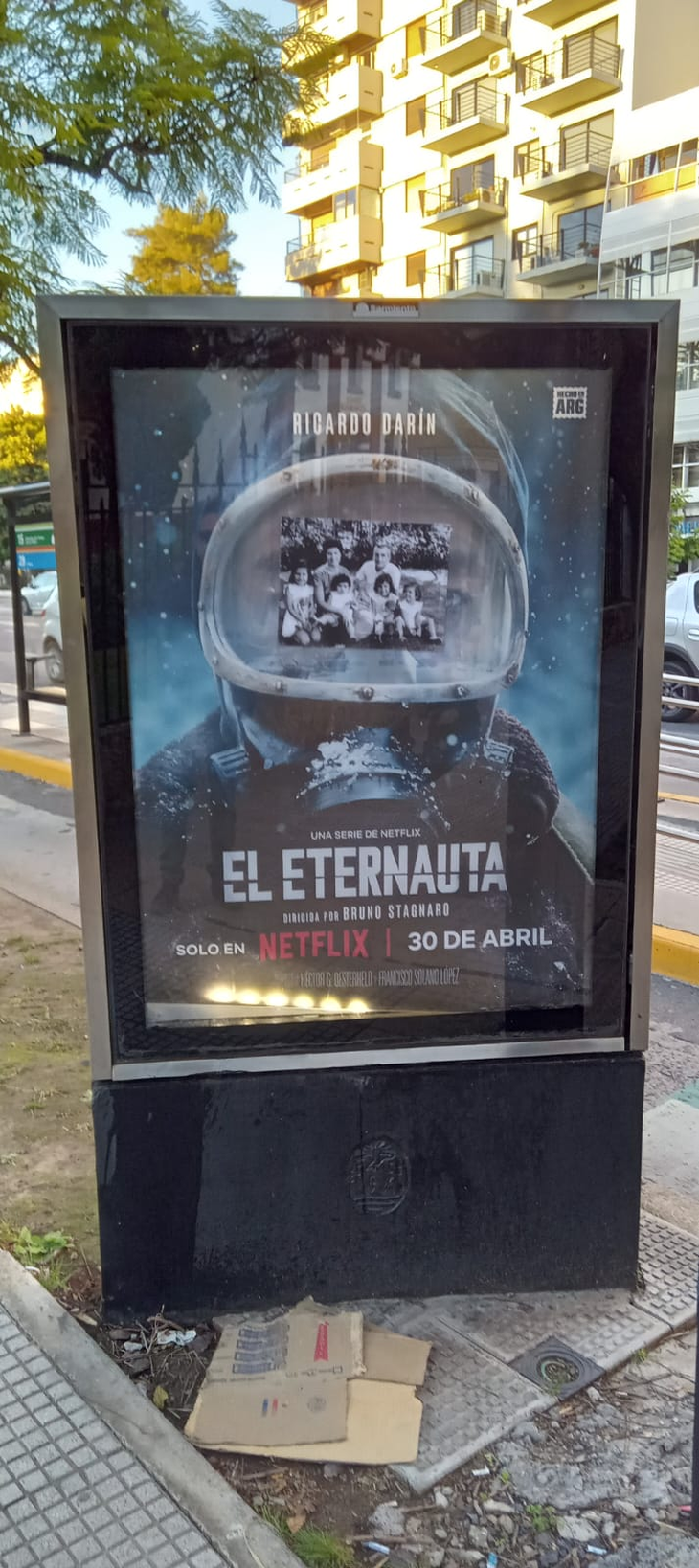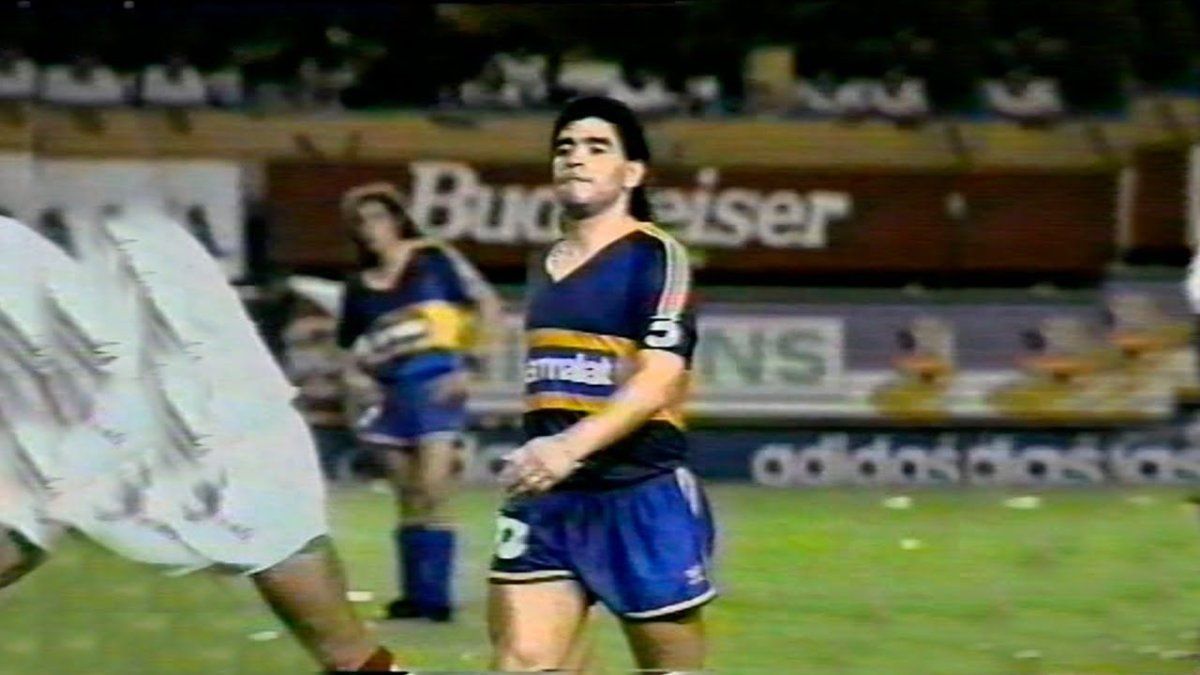A photo of the complete family of The Oesterheld He is stuck in the poster, right in Juan Salvo, The Eternaluta, the protagonist of the most anticipated Argentine science fiction series. There you see a marriage with its four small daughters, sitting in the grass. The man is Héctor Germán, the author of the classic cartoon that Netflix brought to the screen. In that photo I didn’t know, but The history of the alien invasion he wrote would fall short with what they would have to live. He and his daughters would be kidnapped by the civic-military dictatorship (1976-1983) and then missing. The destiny of most of them is still unknown.
The Oesterheld were a middle -class family with European roots, like so many in the mid -twentieth century. Héctor had German ancestry from his father and Spanish and Basque -partner from his mother. In 1944 he met Elsa Sánchez, who would be his wife four years later and with whom he would have four daughters: Estela (1952), Diana (1953), Beatriz (1955) and Marina (1957).
Héctor studied and received a geologist at the UBA, but his true passions were writing and comic. In the mid -1950s he combined them in what would be his great bet: he would create Borderyour own editorial of comics. Then, that market was massive in Argentina, but dominated by the United States comics. Border arose as an original initiative, with their own characters, of common people, but with much more complex stories than those that were usually written. There was born the Eternaluta.
image.png
In the posters of the series the Eternalauta were intervened with photos of the family of Héctor Germán Oesterhed, the creator of the cartoon on which it is based.
This editorial adventure was not simple. He required a lot of work and ingenuity of Héctor, who did not have the great resources of the most powerful publishers. On more than one occasion he had to work at his home, the northern zone villa that would serve as inspiration for the eternal. While his family was growing, his stories also grew. In 1957, the year Marina, her youngest daughter, would be published by the first installment of Juan Salvo and the Mortal Nevadawithout knowing that he was going to become one of the greatest classics of Argentine literature.
His family and the eternal
There is little science fiction in Argentina. In general, the United States and a little less from Europe are consumed. That is why he continues to call the attention that the history of the Eternalist takes place in the country, in everyday scenarios such as the River court, the Barrancas de Belgrano or the Nation Congress. May the protagonists play the trick or speak with our idioms. Much of the inspiration of this story came from Héctor Oesterheld’s own life and his family.
“The Eternaluta began as a short story, of just 70 paintings. Then it became a long history, a kind of adaptation of the theme of Robinson Crusoe. I was fascinated by the idea of a family that was alone in the worldsurrounded by death and an ignored and unattainable enemy. I thought about myself, my family, isolated in our villa and began to ask myself questions, ”Héctor said in an interview in the 1970s.
The answers tried to put in the comic went on the side of the Collective output Before an alien invasion that turned Buenos Aires into an apocalyptic desolation, the individual path was dangerous and of short duration. There was only one way to try to survive. “The true hero of El Eternalauta is a collective hero, a human group. It reflects thus, although without prior intention, my intimate feeling: the only valid hero is the hero ‘in group’, never the individual hero, the hero alone, ”summarized Hector in the introduction of the complete edition of your classic.
His stories and words are no accident. Héctor was a man who was interested in politics in a highly politicized time. The events of the 1960s did not go unnoticed by him. Over time he was committed politically and his stories got more into the subject, reaching a high point with the scripts of the comics about the lives of Ernesto Che Guevara and Eva Perón.
This path was not only in their stories. Over time, his interest in politics led him to militancy. In parallel, their daughters also made their own path and, being very young, joined the revolutionary politics. The 1970s found them together in the same organization, Montoneros.
El-eternauta.webp

“The only valid hero is the hero ‘in group’, never the individual hero, the hero alone,” Hector summarized in the introduction of the complete edition of his classic.
Dictatorship, persecution and disappearance
Like so many families, the life of the Oesterheld was crossed by the tragedy during the last dictatorship. For his political militancy were persecuted and kidnapped by groups of tasks one by one. Their bodies never appeared. Two of Héctor, Diana and Marina’s daughters were pregnant. Elsa, the only family survivor, looked for her grandchildren until the last day of her life, unable to find them. The search continues today Grandmothers of Plaza de Mayo.
The first Oesterheld to be abducted was Beatrizin June 1976, just three months after the coup d’etat. I was 20 years old. Two months later, in Augustthey kidnapped a Diana In Tucumán. Was pregnant And she was a one -year -old mother. His partner Carlos was murdered in the same operation. Diana had 22 years.
In the middle, those who remained lived in hiding and tried to maintain their political militancy and survive the unleashed repression. But they couldn’t do it for a long time. On April 27, 1977 Héctor was kidnapped in La Platathe Buenos Aires capital. He went through different clandestine detention centers such as Vesubio and Sheraton. Survivors’ testimonies say they saw it in very poor condition, product of torture.
His other two daughters could not avoid repression either. On July 1, 1977, Estela, The eldest daughter of the Westheld, was intercepted by a group of tasks and tried to resist. There was a shooting and was injured. It was learned that she was transferred to Adrogué hospital, but then the trail was lost. His final destination is not yet known.
Marina was the last to be kidnapped and missing. In November 1977 She was kidnapped with her husband, Alberto Seindlis, by groups of dictatorship tasks. I was 20 years old and I was eight months pregnant. Nor could his remains be found or know the fate of his son or daughter.
Elsa was the only survivor. The regret accompanied her the rest of her life, as well as her desire to find her two grandchildren or granddaughters kidnapped by the dictatorship. The illegal repression swept with his family mercilessly. Not only her husband and daughters were missing. In total, he lost ten relatives.
In the book Los Oesterheld of journalists Fernanda Nicolini and Alicia Beltrami, Elsa appeared in simple, clear and direct words and largely summarized the history of her family: “My name is Elsa Sánchez de Oesterheld and I am the wife of Héctor Germán Oesterheld, Famous in the world for having written the cartoon The Eternaluta. In the tragic era of this country, my four daughters, my husband, my two sons -in -law, another son -in -law, and two grandchildren who were in the belly disappeared. Ten missing people in my family. But I prefer to remember the years in which I was happy. ”
Today the history of his family returns from the hand of the series Eternalauta and the stubborn return of Juan Salvo, the time traveler who does not stop looking for his family.
Source: Ambito
I am an author and journalist who has worked in the entertainment industry for over a decade. I currently work as a news editor at a major news website, and my focus is on covering the latest trends in entertainment. I also write occasional pieces for other outlets, and have authored two books about the entertainment industry.




